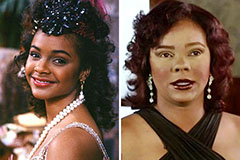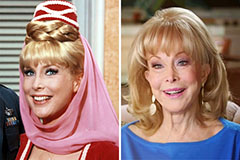Moroccan rugs, famous for their complex designs and rich colors, are more than just household treasures. Each rug holds a story, stitching together the check here threads of time, tradition, and culture.
From the ancient Berber tribes to the bustling souks of Marrakesh, Moroccan rugs have transformed over centuries, showing the diverse influences that have molded this fascinating country. Their beginnings can be traced back to nomadic life, where practicality and functionality were paramount.
Throughout time, these rugs became more than just necessities; they transformed into symbols of status, craftsmanship, and cultural identity.
From Berber Villages to Global Markets: The Journey of Moroccan Rug Weaving
From traditional Berber villages nestled amidst the rolling landscapes of Morocco, a remarkable heritage has flourished for centuries. For generations, skilled artisans have refined their techniques, transforming ordinary materials like wool and silk into breathtakingly intricate rugs. These hand-woven masterpieces, imbued with ancient significance, bridge the gap between time and place, captivating minds worldwide.
Each rug tells a story, a tale woven into yarns using vibrant colors. The rugs have acquired international renown for their unmistakable designs and exquisite craftsmanship, sought after by collectors and interior designers alike.
From nomadic tents to opulent mansions, Moroccan rugs have decorated spaces, adding a touch of opulence and cultural richness.
Colors of Tradition: Exploring the Symbolic Language of Moroccan Rugs
Moroccan rugs hold a special place for their vibrant colors and intricate designs, each meticulously crafted to tell a story. Beyond their aesthetic beauty, these woven masterpieces represent a rich tapestry of tradition, where every hue holds symbolic meaning passed down through generations. From the warm ochre of golden sands to the deep indigo of spiritual depths, Moroccan rug colors offer a captivating glimpse into the cultural heritage and beliefs of this captivating nation.
- {Crimson red, for example,The passionate hue of crimson red embodies both love and festivity within Moroccan culture.
- {Cobalt blue, on the other hand,The serene shade of cobalt blue reflects the peaceful ideals cherished in Moroccan tradition.
- {Each rug is a unique expression of heritage, woven with threads that intertwine ancient beliefs and contemporary artistry. Unraveling the language of Moroccan rug colors allows us to appreciate the depth and complexity of this captivating culture.
The Art and Legacy: Traditions of Moroccan Rug Making
From the bustling souks to the quiet workshops tucked away in mountain villages, Moroccan rug making endures a vital cultural cornerstone. For centuries/generations/epochs, families have passed down their knowledge, weaving intricate patterns and vibrant colors into rugs that are as functional/beautiful/essential as they are symbolic/meaningful/rich in history. Each rug tells a story, reflecting the skills/creativity/heritage of its maker and the spirit/atmosphere/essence of Morocco itself.
- The use of natural/authentic/traditional dyes, often sourced from plants and insects, creates a palette as diverse as the Moroccan landscape.
- Weavers/Artisans/Craftspeople, both men and women, dedicate/commit/devote themselves to their craft, their nimble fingers working with precision/care/mastery to create each knot.
- The creations are more than just floor coverings; they are a tangible link to the past, a celebration of artistry, and a testament to the enduring human spirit.
Today, these artifacts/treasures/masterpieces are sought after by collectors and decorators worldwide, their timeless beauty continuing to captivate/enchant/inspire generations.
Masters of the Loom: Techniques and Traditions in Moroccan Rug Weaving
From the historic Berber traditions to the vibrant colors of modern designs, Moroccan rug weaving has captivated the world with its artistry. Each hand-woven masterpiece is a testament to the mastery passed down through generations of artisans.
The heart of Moroccan rug weaving lies in the intricate designs. These floral forms often symbolize cultural beliefs, legends, and the beauty of the Moroccan landscape.
The weavers deftly use a variety of threads sourced from both locally raised sheep and exotic fibers, like silk and wool. The rugs are then stained using organic pigments derived from plants, insects, and minerals, resulting in a range of captivating hues.
The technique employed in Moroccan rug weaving is truly remarkable.
Fine wool, often sourced from local animals, is the primary material used to create the intricate designs.
- The yarns are meticulously wound around a wooden loom.
- A variety of weaving techniques, including the traditional Berber knot, are used to create the rugs' distinctive texture and pattern.
- Expert weavers spend countless hours carefully tying each knot, ensuring precision and durability.
The result is a luxurious textile that reflects the cultural heritage and artistic prowess of Morocco. Each rug is not simply a floor covering, but a work of art, imbued with history, symbolism, and enduring beauty.
Embracing Tradition: The Cultural Significance of Moroccan Rugs
Moroccan rugs represent more than simple furnishings. They are expressions of a rich and vibrant tradition, woven with fibers that tell stories spanning epochs. Each knot carries a whisper of Berber wisdom, passed down through families for thousands of years.
These woven works of art are more than just elegant objects; they are representative of the beliefs held dear by the Berber people. They illustrate their deep bond with nature, their appreciation for artistry, and their enduring resilience.
From the subtle patterns to the depth of the hues, Moroccan rugs offer a glimpse into a world where heritage flourishes. They are a proof that even in our increasingly connected world, the impact of handcrafted objects continues to enchant.
 Shaun Weiss Then & Now!
Shaun Weiss Then & Now! Daniel Stern Then & Now!
Daniel Stern Then & Now! Lark Voorhies Then & Now!
Lark Voorhies Then & Now! Mary Beth McDonough Then & Now!
Mary Beth McDonough Then & Now! Barbara Eden Then & Now!
Barbara Eden Then & Now!